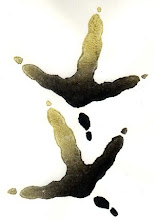 Well, it's gladiator week in the course that I teach. Which means I get to show cool movie clips of Russell Crowe whippin some guy's butt in the Roman arena.
Well, it's gladiator week in the course that I teach. Which means I get to show cool movie clips of Russell Crowe whippin some guy's butt in the Roman arena.But seriously: what does all this have to do with hunting? well, I'm glad you asked. Here's an excerpt from the Brooklyn College Classics Department's gladiator pages, about the venatio, or animal hunts, that took place in the arena. Enjoy:
Another popular spectacle that was associated with gladiatorial contests was the venatio ('hunt'). The primary reference of this word was to actual hunts of game, some of dangerous predators (see left), some of tamer species. The word venatio, however, was actually an umbrella term that included other associated spectacles, such as displays of exotic species from conquered provinces, exhibitions of trained animals, fights between animals of different species, and execution of criminals. The venatio, originally held in the Circus Maximus, in the early empire was incorporated into the munus in the amphitheater. The venatio became a kind of warm-up act in the morning, with the main event, gladiatorial combat, taking place in the afternoon.Measures were taken to protect spectators in the amphitheater from dangerous wild animals. In the Colosseum, these beasts were kept in cages underneath the arena, which were raised by ropes and pulleys to gaited openings in the podium. The animals were then released into the arena. Rollers at the top of the arena wall covered with polished marble prevented animals from climbing up into the crowd. Nets were also employed to keep animals away from the walls as an extra protection and also to make sure that they were visible from all parts of the auditorium. Along the arena wall were a number of small balconies holding archers as a last defense.
The trained hunter was called a venator, who was a level below the gladiator on the ladder of public esteem. Down at the bottom was the bestiarius ('beast-fighter'). Although bestiarii were recruited from the same source as gladiators (prisoners of war, criminals, etc.), they were despised, probably because they had little or no training. Seneca tells a story of a German prisoner of war who went to extreme lengths to avoid participating in one of these hunts (Ep. 70.20):
Recently in a bestiarii show [i.e., a venatio], one of the Germans, when he was being prepared for a morning spectacle, withdrew to relieve himself - no other privacy was allowed to him without a guard; in the lavatory area he stuffed into his throat the stick with a sponge attached which was used to wipe away excrement and with his breathing passage obstructed he choked to death...
Another unwilling bestiarius avoided participation in a venatio by sticking his head through the spokes of a wheel of the cart in which he was being carried to the show and allowing his neck to be broken when the cart began to move.
A venatio consisted of hunters stalking and killing ferocious and some not so ferocious wild animals in the narrow confines of the arena. In 79 BC Pompey gave games in which expert hunters (desert nomads called the Gaetuli) were imported to kill about twenty African elephants. A few years later Caesar pitted 500 infantrymen against approximately the same number of elephants. Cicero wrote about a later show given by Pompey in 55 BC, in which another elephant hunt took place (ad Fam. 7.1.1-3):
The rest of the hunts took place twice a day for five days; they were magnificent, nobody denies it. But what pleasure can there be for a civilized man when either some powerless man is ripped to shreds by a powerful beast or some magnificent animal is transfixed by a spear? But if this kind of show must be viewed, you have seen the same thing often in the past. We who were present at these spectacles saw nothing new. The last day belonged to the elephants. The common crowd found much to admire in this event, but did not really enjoy it. To the contrary, a certain pity was aroused in them and they came to the opinion that this beast shared a certain affinity with the human race.
It should be noted that although few animals survived these hunts, on occasion a bestiarius was killed, as is shown in this sculpture.
Lion killing a bestiarius
Jim again: sounds like some fun, eh? none of this sissy bird hunting with spaniels or setters, nosirree. This was real manly-man stuff.










2 comments:
I should take your course...while you still teach it!
ha ha. Mr. Mike, very funny. I'll have you know that this spring I'm teaching not one but TWO courses. No rest for the weary. I'm straight out.
KGT: you're welcome to sit in any time. This week it's medieval hunting, King Arthur and the knights of the round table, and Disney's Beauty and the Beast. No rest for the weary. I'm straight out.
Post a Comment